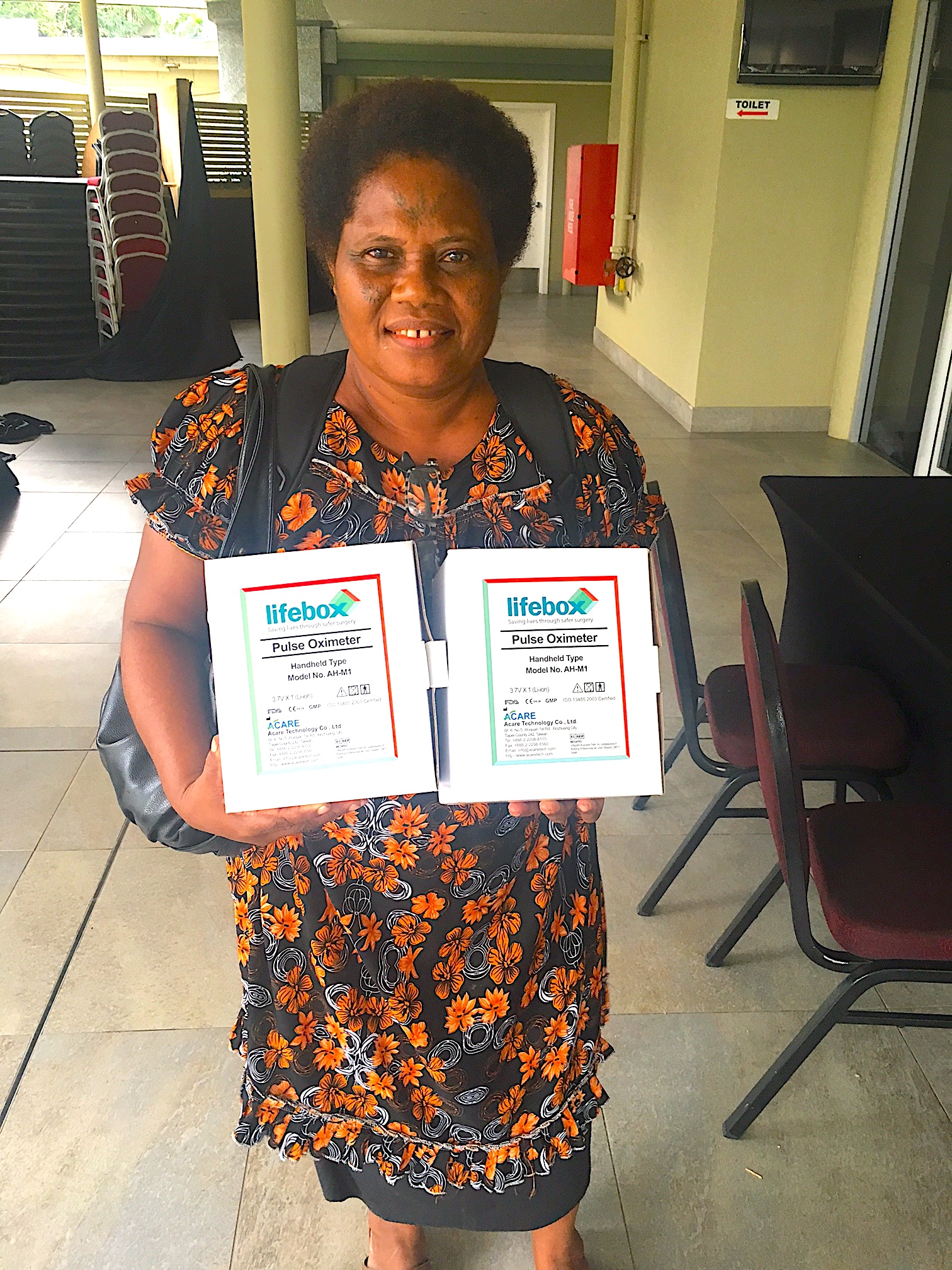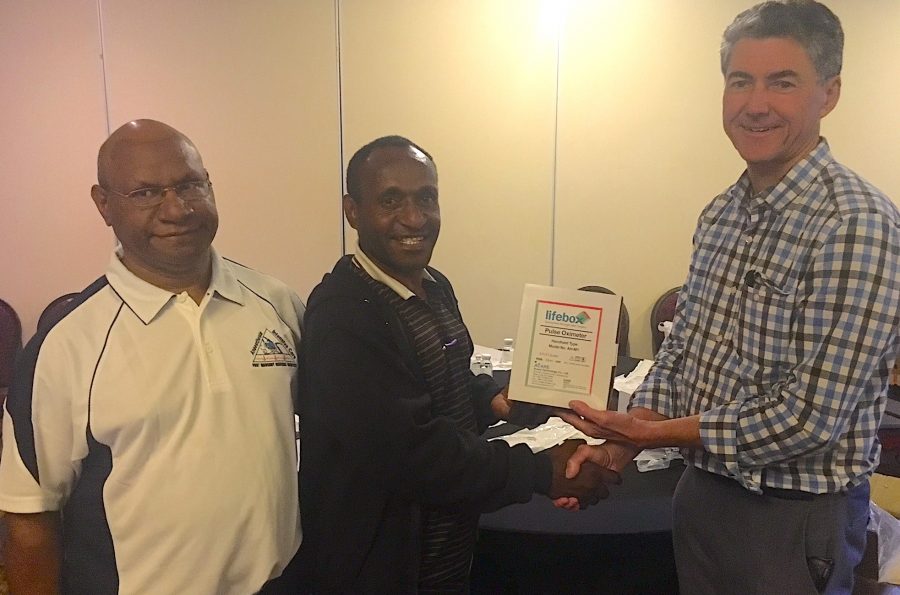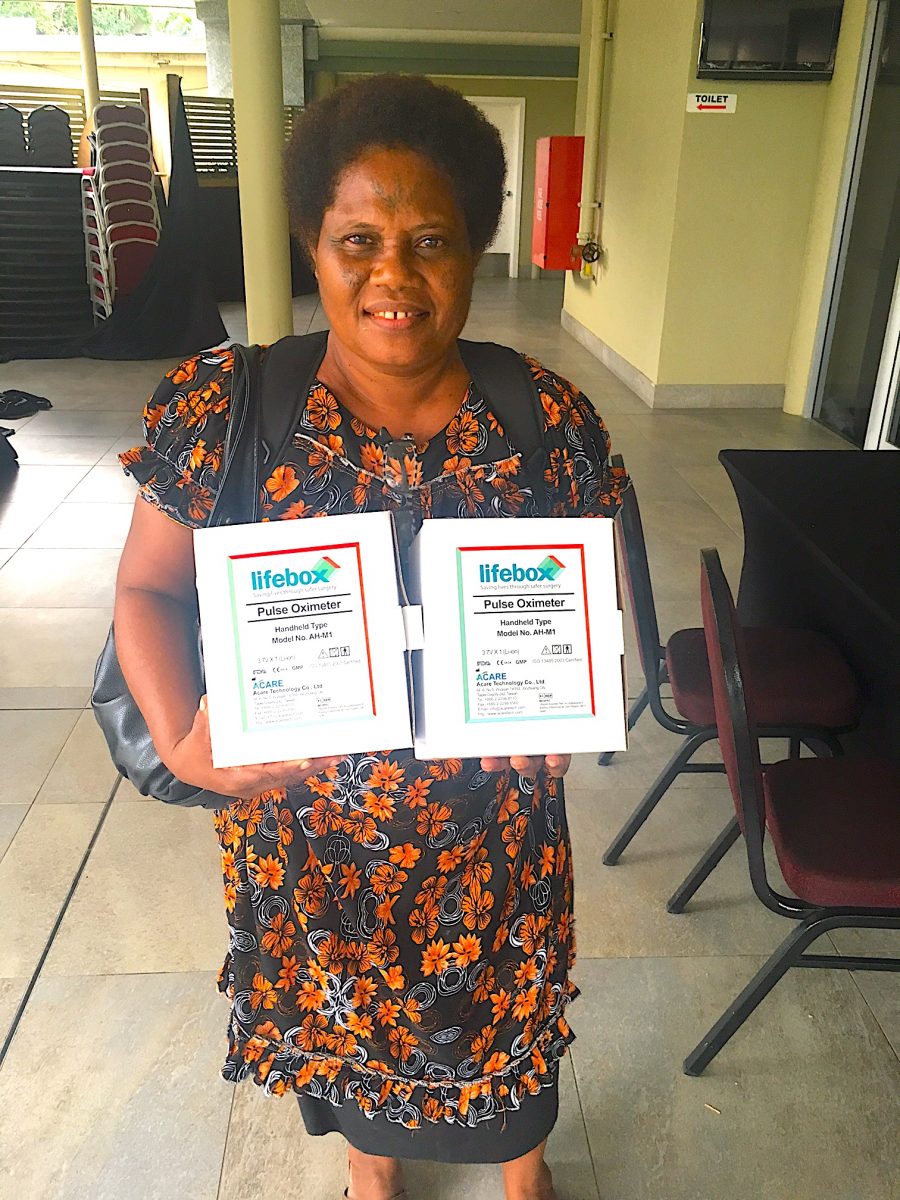
Safer anaesthesia in Papua New Guinea
One such partner is safe anaesthesia champion, Dr Arvin Karu from Papua New Guinea. He’s on mission, working with Lifebox: Australia and New Zealand, to equip every operating room and critical care ward across PNG with a Lifebox pulse oximeter.
We recently caught up with Dr Karu, and this is what we learned.
You’re the coordinator for Lifebox in PNG, how did you get involved in this work?
I got involved when Dr Michael Cooper (from Sydney Children’s Hospital at Westmead) was looking for someone to help coordinate and distribute oximeters all over the country. It was a voluntary thing, but I realised then it was a great initiative because when I started my anaesthesia training in a small provincial hospital in 2001 we had only one working pulse oximeter for three theatres.
It was interesting then because I would use the oximeter at the beginning, during and the end of anaesthesia, and I would move from one operating room to another to share it. Lifebox has really helped in this kind of situation which is common around the country. My old small hospital received two Lifebox oximeters and are very happy with them.

Dr Arvin Karu (senior anaesthetist, Port Moresby), Wesley Jeffrey (ASO, non-physician anaesthetist) and Dr Michael Cooper (senior anaesthetist, The Children’s Hospital at Westmead & St. George Hospital
Can you tell us about some of the challenges anaesthesia providers face in delivering safe surgical care in your region?
Problems include not enough vital signs monitors for all operating rooms, recovery, (PACU) rooms as well as high dependency wards (HDU). Hence we have distributed Lifebox oximeters not only to operating rooms but also PACU, HDU, a few paediatric wards, and neonatal care wards/special care nursery units.
What do you hope to achieve through working with Lifebox?
My hope is for every operating room and critical care ward to have a Lifebox oximeter to conduct anaesthesia safely.
How have Lifebox pulse oximeters and training impacted your practice?
Lifebox has definitely made practice safer, and the oximeters help guide our anaesthetic service providers – especially the nurse anaesthetists who we rely on heavily for 90% of the anaesthetic services here.
Why is the partnership between NGOs like Lifebox, and local clinicians like yourself, so important?
It’s so much easier to get vital equipment like Lifebox oximeters. Trying to get these through normal government processes often takes too long or there’s just not enough in the budget for such.
What does safe anaesthesia mean to you?
For me, safe anaesthesia equates to good, reliable, accurate monitoring. If I know what’s happening to the patient, I can then know when or how to intervene or not, to improve patient safety. Without monitoring, I can only assume or guess, and this will not always result in good outcome. Lifebox oximeters have proven to be excellent in giving good and reliable information regarding oxygenation status as well as heart rate.


